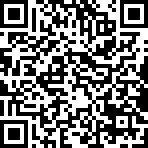Keep Organization Simple
If you’re new on the barcode block, you might be intimidated by all of the different barcode types and their seemingly rigid appearance & confusing lines. There is, however, no reason to be scared. Barcodes are not here to hurt us; rather, they are here to help us by:
- Tracking critical information
- Encoding relevant information that can be read across the world
- Keeping customers happy by increasing reliability and speeding up the transfer of information
Everyday Uses
UPC
There are many different kinds of barcodes (known as symbologies), and each one has its advantages and disadvantages. Whether you realize it or not, you have probably encountered most barcode types at one point or another in your life. Most people are aware of what a UPC code is, and if you aren’t, here is an example of one. Almost all retail products in the United States have UPC barcodes, and if you go to your local grocery store, you will be able to find one on almost every item there.
 QR Codes: Marketing Genius or Useless Distraction?
QR Codes: Marketing Genius or Useless Distraction?
Another commonly known barcode is the QR code. The QR code differs from the UPC code in that the UPC code is a one-dimensional barcode (can be scanned by regular laser scanner), and the QR code is a two-dimensional barcode (requires a two-dimensional imager to scan).
A common misconception businesses have is thinking that the only use for QR codes is for customers to scan and receive some type of information (website address, contact info, etc.). However, scanning QR codes on a smartphone is a time-consuming process, and this coupled with the fact that not everyone has a QR reader on their phone provides a good explanation for why only 21% of smartphone users have ever scanned a QR code. Although the consumer market may not have widely accepted QR codes yet, industries such as warehousing or traceability can use these barcodes with much more success due to a large data capacity and ability to contain product information without a database. Take a look at the following guide to see how 1D and 2D barcodes compare.
Different Barcodes for Different Industries
There are lots of other kinds of barcodes out there, and each one is suited for a slightly different purpose.

Source: http://www.gs1belu.org/
GS1 Databar
The GS1 Databar, which has the capability to include more information on a product besides its number, is most often used to:
- Add descriptive details to fresh food products, such as batch number & expiration date
- Validate concert tickets
- Validate coupons
 PDF417
PDF417
The PDF417 is a two-dimensional barcode that has the highest storage capacity out of any of the other barcodes. It can be found on the back of most government-issued driver’s licenses.
 Data Matrix
Data Matrix
The Data Matrix is a two-dimensional barcode that has the capability to be read even at very low resolutions, which makes it a suitable barcode for small products that need an electronic label, such as circuit boards and other compact computer components.
These are just a few of the more commonly used symbologies, but there are many more types of barcodes out there. Feel free to play around with our Free Online Barcode Generator to see the appearance, capabilities, and limitations of various types of barcodes and create some for your specific application.
If you’re as excited as I am about the possibilities of barcodes and are ready to implement a barcode system, read the Choosing a Barcode Scanner blog series to find out what kind of scanner is right for you. If you have any questions on which barcode products would work best for your situation, please contact us, and we will help you combine top-notch industry standards and personal requirements to custom-fit a solution just for you.
 About the author:
About the author:
RAD DeRose is the President and CEO of L-Tron Corporation. He has over 30 years experience in industrial automation and data collection solutions and brings a deep industry knowledge-base on the challenges faced in the commercial and public safety sectors. RAD can be reached at (800)-830-9523 ext 114 or emailed at RAD.DeRose@L-Tron.com













